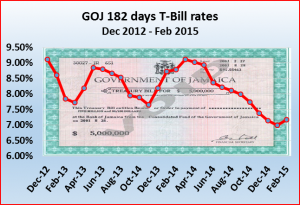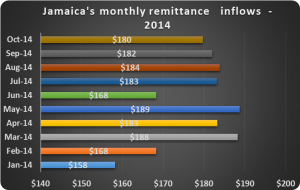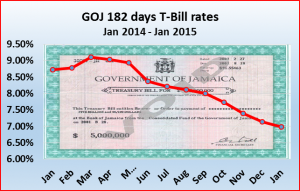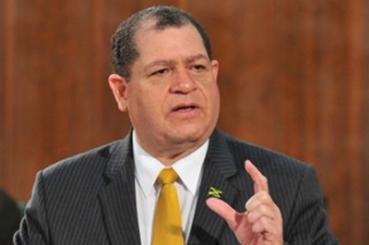TT Repo Rate pushed to 3½%
 The Trinidad Central Bank’s Monetary Policy Committee (MPC) agreed to a third consecutive increase in the ‘Repo’ rate by 25 basis points to 3 ½ per cent in early January. According to a release from the central bank, it based its decision on three factors.
The Trinidad Central Bank’s Monetary Policy Committee (MPC) agreed to a third consecutive increase in the ‘Repo’ rate by 25 basis points to 3 ½ per cent in early January. According to a release from the central bank, it based its decision on three factors.
The first and most influential factor was recent interest rate guidance from the US Federal Reserve about the future path of its monetary policy. The second factor related to signs the Trinidad and Tobago economy seems to be approaching full capacity, and the MPC considered the still positive growth outlook for the non-energy sector despite the steep decline in oil prices.
“The anticipated increase in US interest rates is expected to make US dollar assets even more attractive to investors than TT dollar assets, prompting additional portfolio capital flows out of Trinidad and Tobago in search of higher yields. Although the interest rate differential between TT- and US-dollar assets has widened somewhat over the past month, domestic interest rates must move from historic lows to maintain a comfortable enough position relative to US interest rates. By January 20th, the TT-US differential on benchmark 10-year Treasuries stood at 87 basis points, compared with 53 basis points at the end of December 2014.”
There are signs the Trinidad and Tobago economy seems to be approaching full capacity the central bank says. This is reflected in the movement of a number of economic indicators. Headline inflation is creeping up, reaching 8½ per cent in December 2014 from the 5½ per cent at the start of the year. The pickup in headline inflation is mainly due to food price inflation, which remained in double-digit territory
(almost 17 per cent) for the sixth successive month in December 2014. The acceleration in food prices largely reflects rising prices for locally produced vegetables and fruits. Unemployment is exceptionally low at a little over 3 per cent of the labour force, with the business community reporting shortages of skilled workers which could push up wages in the private sector. Consumer credit continues to expand at a strong pace, helping to finance substantial imports of consumer durables and contributing towards significant excess demand pressures in the foreign exchange market.
The release went on to state that “In the face of declining crude oil prices, the Government substantially revised downwards its energy price assumptions for the 2014/2015 Budget, but it intends to return to the original fiscal deficit target of roughly 2½ per cent of GDP. This suggests the Government is likely to maintain its expansionary fiscal stance that would further add to elevated liquidity levels (currently around $6 billion) and push up core inflation.”
“The positive momentum in the non-energy sector has delivered fairly respectable growth for 15 consecutive quarters to December 2014 and the near-term outlook is for continued steady performance in non-energy output. Boosted in part by strengthening growth in the United States and softer oil prices, the tourism-based economies of CARICOM should see some uptick in activity in 2015, providing further support to Trinidad and Tobago’s non-energy exports.”
“Central Bank has put in place a programme of intensified open market operations to aggressively remove excess liquidity from the banking system in coming months in order to support its Repo rate adjustments. Larger and more frequent foreign exchange interventions aimed at preventing systemic foreign exchange shortfalls will indirectly contribute to absorbing some of the excess liquidity.”

















